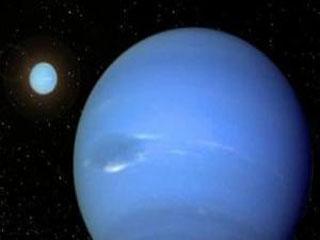
Illustration of a system with twin Neptune-like planets. Photo: University of Oxford
WASHINGTON (BNS): Scientists have discovered around 10 new planets using the CoRoT (Convection, Rotation and Transits) space telescope, operated by the French space agency CNES.
Some of the planets are orbiting a star perhaps only a few tens of millions years old, twin Neptune-sized planets, and a rare Saturn-like world.
The team of scientists has discovered planets outside our solar system -- exoplanets -- when they 'transit', that is passing in front of their stars.
“CoRoT-18b is special because its star might be quite young. Finding planets around young stars is particularly interesting because planets evolve very fast initially, before settling into a much steadier pattern of evolution,” Dr Suzanne Aigrain of Oxford University's Department of Physics, lead UK scientist for CoRoT, said.
Another system of particular interest is CoRoT-24, which is around 4,400 light years from us and consists of a star just a little smaller than our Sun, orbited by two transiting planets.
“The first of these planets is three times larger than the Earth, and takes 5.1 days to orbit the star, whilst the second is 4.8 times larger than the Earth and takes 11.8 days to complete an orbit. So these planets are similar to Neptune in size, but much hotter,” she added.
Elsewhere CoRoT-22b is a rare example of a planet similar in size to Saturn. Located around 2,000 light years from us it takes about 10 days to orbit its star, which is slightly hotter than our Sun.
Once CoRoT detects a transit, additional observations are made from the ground, using a number of telescopes all over the world. Although astronomers cannot see the planets directly, they use the space- and ground-based data to measure the sizes, masses, and orbits of these new planets precisely.
 Previous Article
Previous Article Next Article
Next Article












The Indian Air Force, in its flight trials evaluation report submitted before the Defence Ministry l..
view articleAn insight into the Medium Multi-Role Combat Aircraft competition...
view articleSky enthusiasts can now spot the International Space Station (ISS) commanded by Indian-American astr..
view article